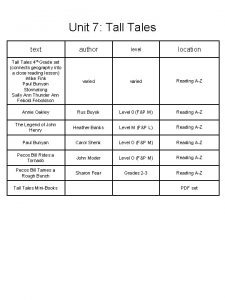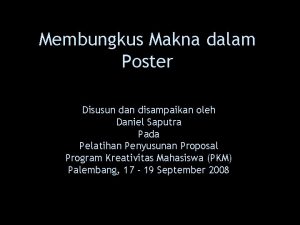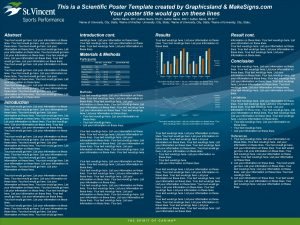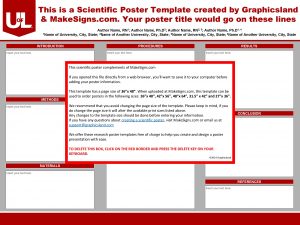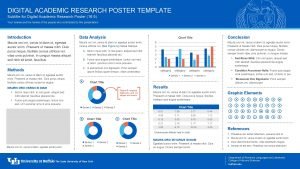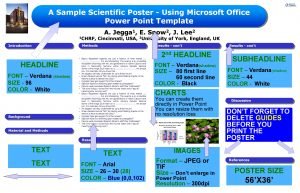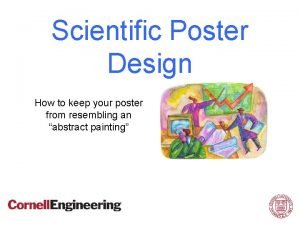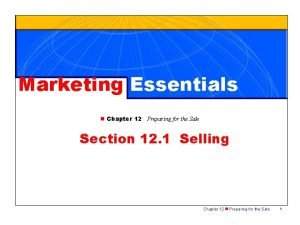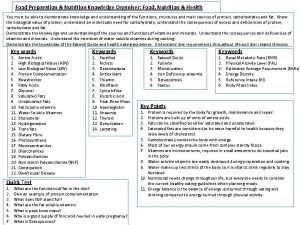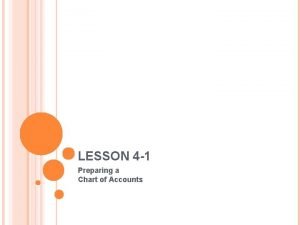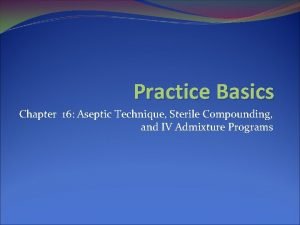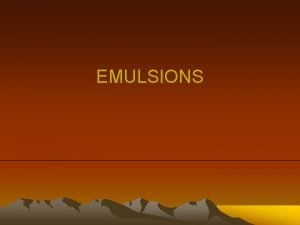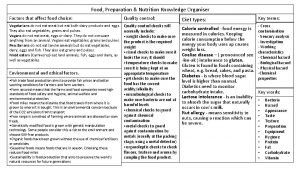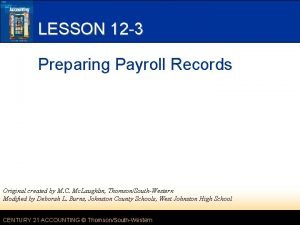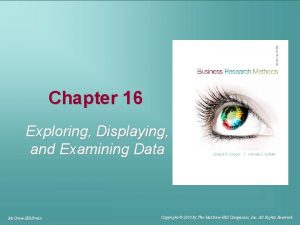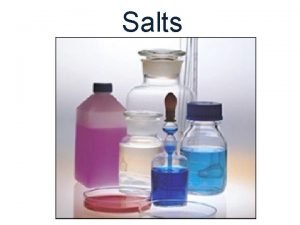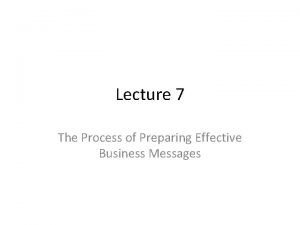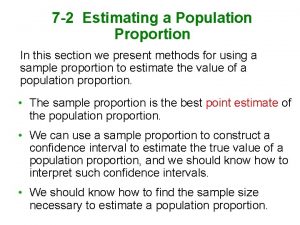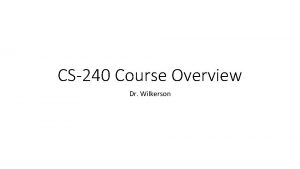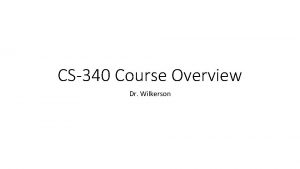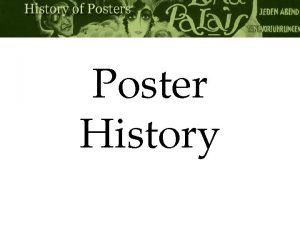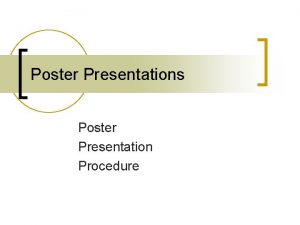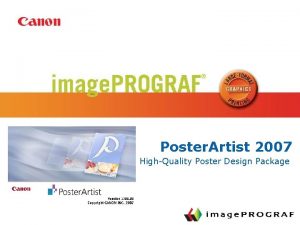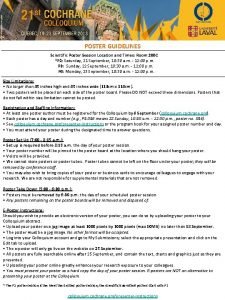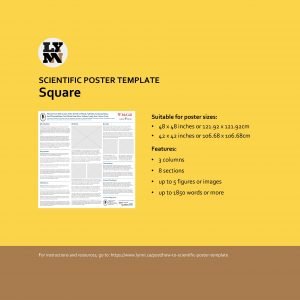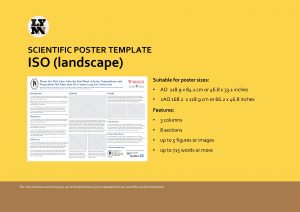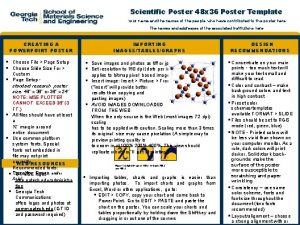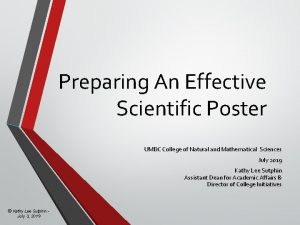Preparing a Scientific Poster Lu Ann Wilkerson Ed


















































- Slides: 50

Preparing a Scientific Poster Lu. Ann Wilkerson, Ed. D. Sr. Assoc. Dean for Medical Education Alan Le. For, M. D. Former Chair, Applied Anatomy College & Professor of Surgery

Objectives • Planning a Poster Presentation – “The Science” • Preparing the Poster – “The Mechanics” – Critiquing some Posters • Presenting

Planning • What is the hardest part of planning?

State Your Research Question • Determine your purpose • State the question that guided your research • Focus your question: Can you tell it all? • Share it with several people – Are any of the terms vague? – Does it seem important? Interesting? • Refine

Know Your Audience • Who will attend? – Level of expertise with this topic – Interests • How much time will be available for viewing? • What is the setting?

Determine the Main Points • Distill to a single story supported by 3 -4 facts. • Be selective. • Leave room for – – Introduction Examples and explanations Visual displays Summary

Preparing the Poster

Components • Abstract and References are NOT generally used • Typical format: IMRa. D • Case Report format – Introduction • Review of the literature • Rationale for choosing this case – Case Presentation – Conclusion • References are generally not included

Title • Select a title – Accurately represents your work – Attracts the viewer – Matches the title submitted in your abstract • Authors, including your mentor • Institutional affiliations

Introduction • Why is this problem important? – Context – Literature • Can be bullet points • Can be brief

Methods • • • Sample Instrumentation Procedure IRB approval if human subjects Enough detail so the viewer can tell what you did – Sometimes a photograph – Bullet points are fine

Results • Decide on 2 to 3 key results • Display your results visually – Graphs / Charts – Data Tables – Photographs • Provide visual organizers – Subtitles – Color coding

Conclusions • What are the implications of your study? – A few bullet points are perfect • What are the limitations? • What additional studies are needed? • Include only essential references – Landmark studies – Study you are confirming or disconfirming

Mechanical Factors • Know the dimensions you are allowed (4’ x 4’) • Bring your own tacks! • Visuals should be readable from 5 -6’ away. Use an appropriate font size. • Use a Sans serif font. Don’t mix fonts. – Serif – Sans serif • Format choice – Single poster sheet – Poster board and spray mount

Cost • Color printing, Poster board, spray mount: About $15 • One piece professionally printed: $50200 • A well-done poster session: Priceless!!!!!

Let’s Critique some REAL Posters! The Mechanics and a Disclaimer! Photographs by Alan Lefor, MD































Sketch the Layout • Use a font readable from 5 -6 feet away • Use the Does/Does Not Test – Is the organization clear? – Are the main points obvious? – Is it visually interesting? • Include Charts, graphs, pictures • Use Color for emphasis

Presenting the Poster

Interact with Your Audience • Start with the viewer’s interest – Ask if you can tell them more. • Describe the purpose in one sentence • Describe the methodology concisely. – Sample – Major instrumentation • Stress the unique results. • This is the FUN of a poster compared to a regular scientific talk. You may get new ideas!

Common Problems • • • Inappropriate level for the audience Disorganized format Too much detail included Poor visuals No interaction with the viewers
 Wilkerson air dryer
Wilkerson air dryer Andre wilkerson
Andre wilkerson Was sally ann thunder ann whirlwind a real person
Was sally ann thunder ann whirlwind a real person Carol ann duffy ann hathaway
Carol ann duffy ann hathaway Perbedaan poster ilmiah dan poster umum
Perbedaan poster ilmiah dan poster umum Vcaa biology poster template
Vcaa biology poster template Scientific poster template
Scientific poster template Makesigns scientific poster
Makesigns scientific poster Poster subtitle
Poster subtitle Academic poster template powerpoint 70x100
Academic poster template powerpoint 70x100 Scientific poster template publisher
Scientific poster template publisher Chemistry research investigation example
Chemistry research investigation example Vce psychology scientific poster
Vce psychology scientific poster Vce physics practical investigation ideas
Vce physics practical investigation ideas How to make a scientific poster in adobe illustrator
How to make a scientific poster in adobe illustrator Vcaa psychology exam 2017
Vcaa psychology exam 2017 How is a scientific law different from a scientific theory?
How is a scientific law different from a scientific theory? Scientific inquiry vs scientific method
Scientific inquiry vs scientific method Marketing essentials meaning
Marketing essentials meaning Documentation preparing the list of works cited
Documentation preparing the list of works cited Petty cash in income statement
Petty cash in income statement Preparing food
Preparing food Prepare dessert and sweet sauces
Prepare dessert and sweet sauces Did your mother prepare the dinner
Did your mother prepare the dinner Chapter 4 test a part two preparing a chart of accounts
Chapter 4 test a part two preparing a chart of accounts Chapter 18 preparing for the world of work
Chapter 18 preparing for the world of work Imagine that you are preparing a project with your friend
Imagine that you are preparing a project with your friend 4-1 work together, p. 97
4-1 work together, p. 97 Wet gum method emulsion
Wet gum method emulsion To prevent coring of a rubber stopper in vials
To prevent coring of a rubber stopper in vials When preparing an iv solution a technician should work
When preparing an iv solution a technician should work Milady chapter 26 pedicuring test answers
Milady chapter 26 pedicuring test answers Chapter 1 preparing your path to success
Chapter 1 preparing your path to success Strategic prospecting definition
Strategic prospecting definition Preparing for primary 1
Preparing for primary 1 Classify emulsifying agents with example
Classify emulsifying agents with example Chapter 18:2 writing a cover letter and preparing a resume
Chapter 18:2 writing a cover letter and preparing a resume Tender document preparation
Tender document preparation Preparation of alkyl halides from alcohols
Preparation of alkyl halides from alcohols Preparing food
Preparing food Multidecker sandwich definition
Multidecker sandwich definition Decisional balance
Decisional balance Preparing payroll records
Preparing payroll records Data preparing exploring examining and displaying
Data preparing exploring examining and displaying Bar chart of accounts
Bar chart of accounts Solubility of common salts
Solubility of common salts Preparing effective business message
Preparing effective business message Preparing a chart of accounts
Preparing a chart of accounts What are the personal characteristics required of a valet?
What are the personal characteristics required of a valet? Estimating a population proportion
Estimating a population proportion There are four closing entries
There are four closing entries


